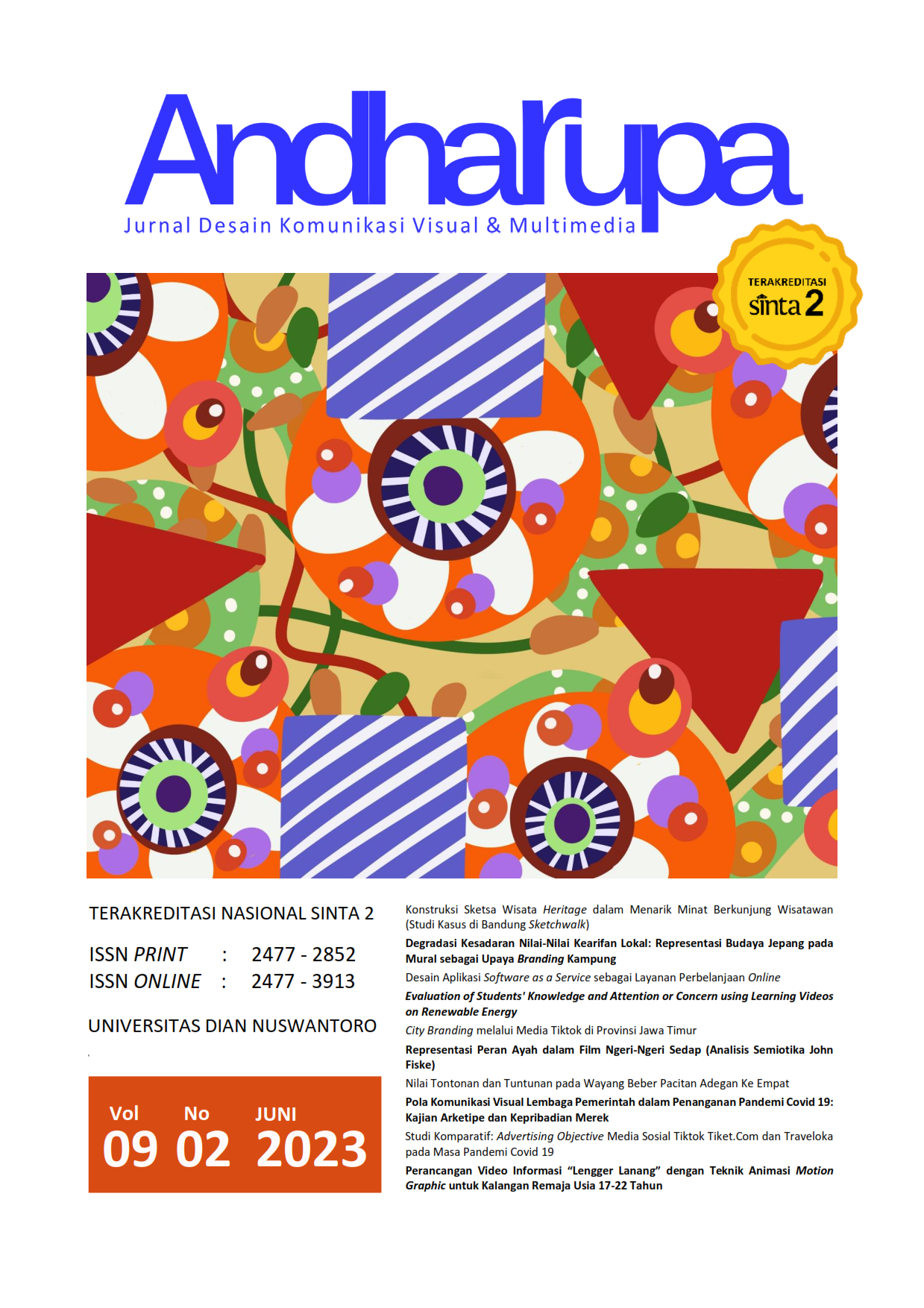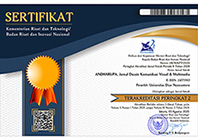Evaluation of Students' Knowledge and Attention or Concern using Learning Videos on Renewable Energy
DOI:
https://doi.org/10.33633/andharupa.v9i02.8156Abstract
AbstractThis research describes the evaluation of students when learning videos on renewable energy to increase students' knowledge and awareness about reducing fossil energy. Learning models, namely learning videos and other features, support student learning processes. Some of the learning videos describe Biodiesel or renewable energy sources derived from vegetable resources, namely used cooking oil, which is one of the current crucial problems regarding reducing fossil energy that must be addressed immediately. Students, as the nation's young generation, are less concerned about this problem, so there is a need for a learning model about renewable energy that can increase student knowledge and concern about the current reduction in fossil energy. One alternative learning model to clarify this subject is through Renewable Energy themed Learning Videos in Audio Visual class. The research method used is a descriptive qualitative method and a quantitative method. Respondents in this study were 60 students from the Audio Visual subject group. The Learning Model fully uses Learning Videos. Evaluation of the impact of this learning model shows that, in fact, with this learning model, the knowledge and attention or concern of students increases after participating in the learning process using learning videos with the theme of renewable energy. Keywords: evaluation, learning model, learning video, renewable energy AbstrakPenelitian ini mendeskripsikan hasil evaluasi siswa ketika mempelajari video energi terbarukan untuk meningkatkan pengetahuan dan kesadaran siswa tentang pengurangan energi fosil. Model pembelajaran yaitu video pembelajaran dan fitur lainnya mendukung proses belajar siswa. Beberapa video pembelajaran menjelaskan tentang Biodiesel atau sumber energi terbarukan yang berasal dari sumber daya nabati yaitu minyak jelantah yang merupakan salah satu permasalahan krusial saat ini terkait pengurangan energi fosil yang harus segera diatasi. Pelajar sebagai generasi muda bangsa kurang memperhatikan masalah ini, sehingga perlu adanya model pembelajaran tentang energi terbarukan yang dapat meningkatkan pengetahuan dan kepedulian siswa terhadap pengurangan energi fosil saat ini. Salah satu alternatif model pembelajaran untuk memperjelas mata kuliah ini adalah melalui Video Pembelajaran bertema Energi Terbarukan di kelas Audio Visual. Metode penelitian yang digunakan adalah metode kualitatif deskriptif dan metode kuantitatif. Responden dalam penelitian ini adalah 60 siswa dari kelompok mata pelajaran Audio Visual. Model pembelajaran sepenuhnya menggunakan video pembelajaran. Evaluasi dampak model pembelajaran ini menunjukkan bahwa sebenarnya dengan model pembelajaran ini pengetahuan dan perhatian atau kepedulian siswa meningkat setelah mengikuti proses pembelajaran menggunakan video pembelajaran bertema energi terbarukan. Keywords: evaluasi, energi terbarukan, model pembelajaran, video pembelajaranReferences
Amatller, A.M., and Simó, L. P. 2007. Audiovisual and Multimedia Resources in e- Learning. First Video Funet Conference, 10?11 May. Tampere, Finland.
Cheppy Riyana. 2007. Pedoman Pengembangan Media Video. Jakarta: P3AI UPI.
Cooper, P. & Dancyger, K. (2015). Writing the Short Film. Third Edition. London, UK: Elsevier Focal Press
Effendy, O. U. 2013. Ilmu, Teori dan Filsafat Komunikasi. Bandung: Citra Aditya Bakti.
England, E., & A. Finney. 2011. Interactive Media – What’s that? Who’s involved? ATSF White Paper – Interactive Media UK, http://www.atsf.co.uk/atsf/interactive_media.pdf
Kadabayi. L. 2012. The Role of Short Film in Education. Procedia – Social and Behavioral Sciences. 47, pp. 316-320.
Khanal, Samir Kumar; Rasmussen, Mary; Shrestha, Prachand; Van Leeuwen, Hans J; Visvanathan, C.2008. Bioenergy and Biofuel Production from Wastes/Residues of Emerging Biofuel Industries. Water Environment Research; Alexandria Vol. 80, Iss. 10, pp. 1625-1647.
Knothe, G.; Van Gerpen, J.; Krahl, J. (Eds.).2015. The Biodiesel Handbook, 2nd ed.; AOCS Press: Champaign, IL, USA.
Luen, K.W., Fook, S.O. and Yong, T.K. 2012. Constructing a survey questionnaire to collect data on service quality of business academics. European Journal of Social Sciences. Vol. 29, No. 2. pp. 209-221.
Musfiqon. 2012. Development of learning media and sources. Jakarta: Prestasi Pustakaraya.
Obergassel, W.; Arens, C.; Hermwille, L.; Kreibich, N.; Mersmann, F.; Ott, H.E.; Wang-Helmreich, H. Phoenix. 2016. The Ashes—An Analysis of the Paris Agreement to the United Nations Framework Convention on Climate Change; Wuppertal Institute for Climate, Environment and Energy: Wuppertal, Germany.
Ossai-Ughbah N.B., and Ogunrombi S.A., and Ameh I.O. 2012. Motivating use of Audio- Visuals in a Nigerian Technological University Library. Journal of Educational and Social Research. Vol. 2, No.1. pp. 217233.
Ridjan, I.; Mathiesen, B.V.; Connolly, D.; Dui, N. 2013. The feasibility of synthetic fuels in renewable energy systems. Energy 57, pp. 76–84.
Rusman et al. 2011. Pembelajaran Bernasis Teknologi Informasi dan Komunikasi. Jakarta: Rajawali Press.
Sadiman S.A. et al. 2018. Media Pendidikan: pengertian, pengembangan, dan pemanfaatannya. Jakarta: PT. Rajagrafindo Persada.
Sugiyono. 2018. Metode Penelitian Kuantitatif, Kualitatif dan R & D (2nd ed.). Bandung: CV. Alfabeta.
Tongco, M.D.C. 2007. Purposive sampling as a tool for informant selection. Ethnobotany Research & Applications Journal. Vol 5. pp. 147 – 158.
Vaugan, T. 2011. Multimedia: Making It Works, 8th Edition. New York: McGraw Hill.
Downloads
Published
Issue
Section
License
Authors who publish with this journal agree to the following terms:
- Authors retain copyright and grant the journal right of first publication with the work simultaneously licensed under a Creative Commons Attribution License that allows others to share the work with an acknowledgment of the work's authorship and initial publication in this journal.
- Authors are able to enter into separate, additional contractual arrangements for the non-exclusive distribution of the journal's published version of the work (e.g., post it to an institutional repository or publish it in a book), with an acknowledgment of its initial publication in this journal.
- Authors are permitted and encouraged to post their work online (e.g., in institutional repositories or on their website) prior to and during the submission process, as it can lead to productive exchanges, as well as earlier and greater citation of published work (See The Effect of Open Access).















